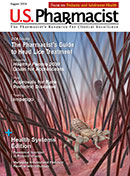According to recent data collected by the U.S. Department of Labor, injuries related to carpal tunnel syndrome (CTS) have steadily declined from 1.3 million in 2003 to 900,380 in 2018. However, Henry Ford Health System researchers attempting to clear up inconsistent information in previous studies discovered that injuries in labor industry jobs still outpace injuries related with office jobs.
The researchers conducted a study to determine whether clerical work or labor-type work is more highly associated with risk for developing work-related CTS. In a retrospective study published in the Journal of Occupational and Environmental Medicine, researchers reported that manual labor jobs that entail lifting, gripping, and forceful wrist motion contribute to elevated rates of CTS. Workers who are at risk for CTS are those who do jobs that entail repetitive finger use. Examples of motions that may increase an individual’s risk of developing CTS include high-force hammering, long-term use of hands, extreme motions of the wrist, and vibrating motions.
Additionally, while CTS is one of the most reported occupational injuries, there are other possible sources or associations for this condition, including diabetes, thyroid dysfunction, fluid retention from pregnancy or menopause, autoimmune disorders such as rheumatoid arthritis, fractures or trauma to the wrist, and many other factors.
In a press release, Charles Day, MD, executive vice chair and chief of hand & upper extremity surgery of Henry Ford’s Department of Orthopedic Surgery and the study’s senior investigator, stated, “This study is an important reminder that carpal tunnel is a primary contributor to hand and upper extremity pain in both the clerical and manufacturing work places, and that ergonomic conditions for workers in both industries should be equally considered.”
Dr. Day also said that a large, randomized study of manual labor and office jobs is necessary to better evaluate the correlation with CTS, which causes swelling of the ligaments and bones in the wrist, leading to nerve compression. He remarked that common symptoms range from mild intermittent numbness in the fingers to hand weakness, loss of feeling, extreme night pain, and loss of hand function.
Recommendations from Dr. Day for diminishing one’s risk for developing CTS or worsening existing symptoms is to avoid repetitive motion like lifting, grasping, holding a vibration tool, or typing on a keyboard. For relief of discomfort or pain associated with CTS, affected patients may self-treat with available OTC analgesics and the use of protective and supportive hand/wrist splints. Surgery is recommended when CTS does not respond to nonsurgical treatments or becomes severe.
The content contained in this article is for informational purposes only. The content is not intended to be a substitute for professional advice. Reliance on any information provided in this article is solely at your own risk.
« Click here to return to OTC Update.
Published May 12, 2021






